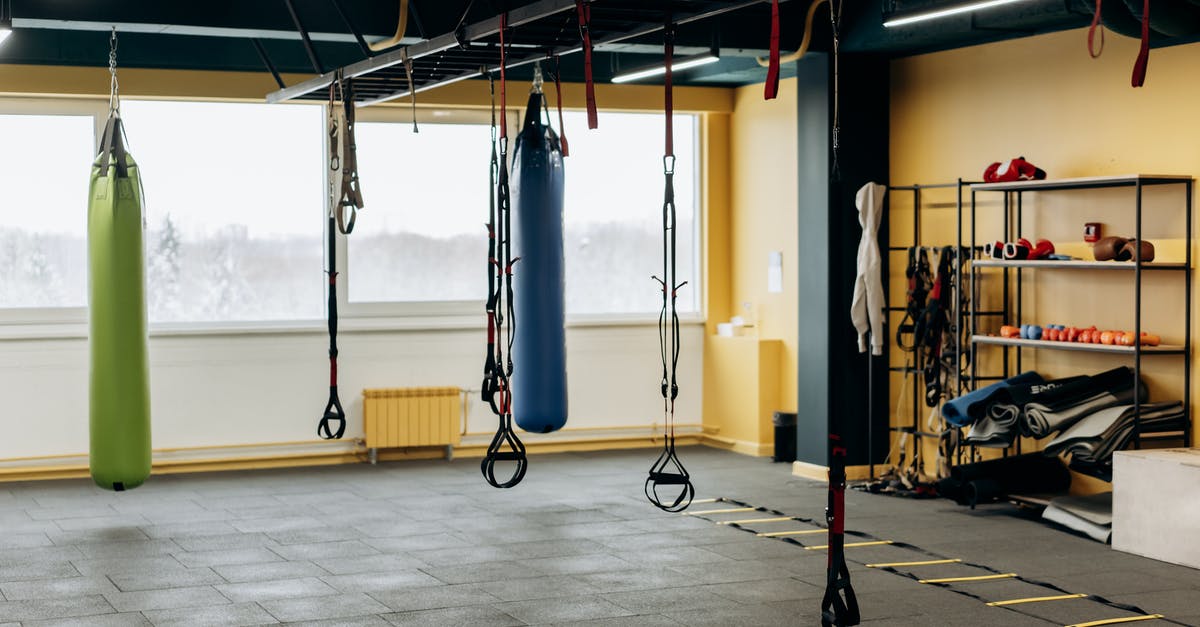How do inverted objects work in Tenet?

Paradoxically I think I got the plot and timeline in Tenet to a degree, but not the basic mechanic itself.
I want to focus on the shooting range scene where the female scientist explains how inverted things work to the protagonist.
- When should the bullets have appeared on the wall from the forwards perspective?
- Were they shot when the gun was still uninverted?
- What happens if you close the drawer with the bullet casings? Does the gun just not unshoot?
- Was the protagonist pulling or releasing the trigger?
- Is there a difference between a forwards person shooting an inverted gun and an inverted person shooting an inverted gun?
And the most basic of all - how was the protagonist able to undrop objects? At least in the scene where he was fighting himself it could make sense as both versions were acting a certain way, which provides the cause and effect for the things that transpired both ways.
Best Answer
The inverted time physics in Tenet is coherent enough to support the plot but if you think about it long enough it falls apart in many places. There are plenty of funny things that happen that have a more or less logical explanation, an extrapolation of what time reversal would look like if it were possible. But many things end up as contradictions. When you see the movie it is OK because you don't expect to understand everything.
The movie presents the wall with bullets and other artifacts as remains of a future war. So you imagine a future war with part of the world reversed, someone shoots at a wall, some machines break and fall apart, and all this ends up burried. Since it happened in inverse time, the remains of these events move backwards in time and end up burried in the present time, where they are dug out.
But that doesn't add up. A bullet has a single timeline and is shot only once. It doesn't get shot and "unshot" by somewhere else. At least that is not how the plot works: "What happened, happened." Since we see the protagonist shooting the bullet (even though in reverse), that is when it happened. The bullets in the wall were shot by the protagonist, and never and nowhere else in the future or the past.
Another interesting question is: where did the bullets come from? Since they come from the future, to see where they come from, you have to follow their timeline back in inversed time, which is forwards in normal time. You just need to see where they go. And they go into a storeroom. If the bullets come from the future, and in the future they are in the cupboards in a storeroom, that that is how they came to the present time. Someone in the future must have reversed himself and placed the bullets and other mechanincal parts in these cupboards. Not quite the story that the movie suggests.
- When should the bullets have appeared on the wall from the forwards perspective?
From an inversed perspective the wall disintegrates slowly, the bullets rust, and end up as dust. So, from the forward perspective, patches of rust spontaneously "unrust" into bullets, the wall resolidifies around it until it gets dug out. Possibly the wall was reversed in the past. If so, it appeared simultaneously in its forwards and inverted form on both sides of a turnstile.
- Were they shot when the gun was still uninverted?
Not, they were shot by the protagonist. It is not what the movie suggests, but it is the only way it could happen in a coherent way.
- What happens if you close the drawer with the bullet casings? Does the gun just not unshoot?
The philosophy of the movie is "What happened, happened". So the casings must be where and when they were needed. We don't know what would happen if someone prevents things to happen because in the movie it is never done.
- Was the protagonist pulling or releasing the trigger?
That is one place where the details become messy. In theory, in an inversed shot it is not the finger that pulls the trigger, but the trigger that pushes the finger back. But how that works with a gun that wasn't inverted in the first place isn't quite clear.
In the movie, the instructions Barbara gives are "aim and pull the trigger".
- Is there a difference between a forwards person shooting an inverted gun and an inverted person shooting an inverted gun?
The inverted person firing an inverted gun won't notice anything unusual.
For a forward person firing an inverse gun the gun behaves in a must unusual way, as you can see when the Protagonist shoots the inverse gun.
From the point of view of the inverted gun it is like being a forward gun operated by an inverse person. An inverse person is just pressing and releasing the trigger for a short time whether it is seen forwards or backwards.
It is not clear how the shooting action is being coordinated between a forward person and an inverse gun. At some time an inverse bullet jumps out of the wall just as the Protagonist decided to press the trigger. These two events join into the firing of the gun.
- How was the protagonist able to undrop objects?
I would say the idea is that reversing entropy changes the direction of causality. While normally the past determines what the future will be, inverse-entropy objects impose to the past to be what it needs to be for the future to happen. From the inverse perspective the hand opens and the bullet falls, so from the forward perspective when you see the bullet jump up you just see the consequence of an action that didn't happen yet, but is bound to happen because you already have seen the consequences. It is unclear how it affects the protagonist's free will to prevent him to not close his hand after all. He can't act otherwise because "What happened, happened."
Pictures about "How do inverted objects work in Tenet?"



How are objects inverted Tenet?
The basics of time inversion is that someone in the future invented some doodad that allows time to flow backwards. Therefore, certain elements are flowing backwards through time. Their trajectory has become inverted. That's not to say free will is nonexistent because instinct drives the momentum of the object.How do inverted bullets work Tenet?
From an inversed perspective the wall disintegrates slowly, the bullets rust, and end up as dust. So, from the forward perspective, patches of rust spontaneously "unrust" into bullets, the wall resolidifies around it until it gets dug out. Possibly the wall was reversed in the past.Is Tenet inversion possible?
With Tenet's inversion this is impossible. If you want to travel backwards in time to last week, you've got to step into the inversion turnstile, then spend a week living in Backwards World, then go into the turnstile again to start moving forward a week ago.How does the time travel work in Tenet?
Like other time travel stories, Tenet uses a time machine. But unlike the other stories, Tenet proposes a novel mechanism for this \u201cTurnstile\u201d machine to send a person or thing backward into its own history.Tenet || Inversion Visualized || Inverted Objects and World Lines #4 [SPOILERS]
More answers regarding how do inverted objects work in Tenet?
Answer 2
I will try to answer the questions one bye one, because the understading of the way of working of inverted objects seems to vary from the living being's one:
- When should the bullets have appeared on the wall from the forwards perspective?
In the future, someone will shoot the wall with a gun. After that, the piece of wall will be introduced in the turning device and, in some moment, delivered to the organization the girl in the lab is working for.
- Were they shot when the gun was still uninverted?
Yes. Original shooter and the all the equipment (ammo, gun and wall) will be in "the forward state" during the shootage.
In the lab scene the shooter is the only thing that keeps his state, the other things are "inverted".
- What happens if you close the drawer with the bullet casings? Does the gun just not unshoot?
The film is casuistic and determinist in both ways, forward and inverse time. If all conditions don't allign, things shouldn't happen. Something could happen in the lab room that allow the bullet casing to return inside the gun with the bullet projectile.
Maybe, if you try to shoot with the drawer closed:
a) the girl in the lab will remember she put her pencil in the drawer and she will open it just before you shoot, or b) the table leg will break, making the table falling, opening the drawer and releasing the casings, or c) drawer is loose so it will open a little bit alone, allowing the casings out...
You know: determinism.
We can find another example in Neil (getting into the helicopter and coming back to the opening door moment instead of avoiding being there). Neil could escape or maybe have a flight accident that doesn't allow him to accomplish his goal, but this won't happen: he is loyal to the "contract" he made and nothing could block his path to the door moment, following the rule the leader of the soldiers told them just before the first time the main character gets into the inverter wheel: "Check if you are exiting the wheel". Determinism is there.
- Was the protagonist pulling or releasing the trigger?
Thinking about it, you can find that pulling the trigger is always accompanied by the automatic release of it. Could we say that it is palindrome movement?
- Is there a difference between a forwards person shooting an inverted gun and an inverted person shooting an inverted gun?
Assuming the trigger movement creates the same effect in both ways, I would like to focus this question according to the place where the bullet is. In this case, what I think is:
Forwards person shooting an inverted gun with bullets in the chamber: nothing happens. Forwards person shooting an inverted gun with bullets outside the chamber (e.g. in a wall): Bullets return to the gun, dealing damage to anyone in the trajectory.
Inverted person shooting an inverted gun with bullets in the chamber: shoot. Inverted person shooting an inverted gun with bullets outside the chamber (e.g. in a wall): nothing happens.
I based this on the body behaviour of an inverted person being burnt, getting cold instead of hot. For the gunpowder in the bullet and its detonation, it could work in the same way.
I hope I've solved your questions, although I expect that new doubts could appear about this topic. I have found quite interesting content and information in the reddit of the film: https://www.reddit.com/r/tenet/ . I hope it will be useful for you too.
Anyway, don't try to find a explanation for everything in the story. Don't forget that Nolan itself stated that:
"... though we’re not going to make any case for this being scientifically accurate. But it is based roughly on actual science."
Answer 3
From the bullet's perspective, it is moving "normally" through time at all points; it is either conventionally manufactured and placed in a turnstile, or manufactured entirely in an inverted factory (seems difficult, logistically, so we'll go with the first option). Upon being inverted it is now moving backwards through time, experiencing inverted forces (to which it still reacts somewhat predictably in the immediate sense), and surrounded by a reality that, from its perspective, appears to be (with the exception of other inverted objects) moving backwards.
The bullet is loaded into a gun by the backwards moving--from the bullet's perspective--Protagonist, then fired into the wall. The physics at this point are not mathematically well-defined, but from the "pissing in the wind" conversation in the shipping container and the appearance of the cracks in the glass in the Oslo vault, the bullet will then "erode" and slowly disappear (from its own point of view), while from an un-inverted perspective slowly appearing along with the hole.
- The exact timeline for when the bullet would have appeared is undefined/possibly inconsistent based on other happenings in the film. We can conclude, however, that the wall into which it was shot was not inverted, or at least inverted separately from the bullet and shot afterwards. Were the bullet already embedded in the wall when both went into the turnstile the shooting would have necessarily already occurred in a normal, un-inverted state.
- The state of the gun is also not defined; I believe it would be possible to argue that the mechanism of a firearm, relying on forces generated by the combustion of powder in the casing, would fail to cycle properly with entropically mismatched components. Arguments based on things like "inverted gasoline burns in normal air, and inverted cars run on inverted gasoline" would suggest the opposite.
- "What-ifs" don't really exist in the logic of the movie (insert broader philosophical questions about determinism here). This is implied in the conversation on the hypocentre LZ at the end of the film: "what's happened's happened", "an expression of faith in the mechanics of the universe", etc.
- The pistol (appears to be a Beretta 92fs/M9, I could be wrong on the specific model) is double-action, and the safety is off when the Protagonist racks the slide (small red dot, visible at the back/on the side of the slide). This would cock the hammer (were the safety on the hammer would de-cock automatically when the slide returned forward), suggesting the Protagonist is pulling the trigger/releasing the hammer to strike the inverted primer.
- The mechanics of the two situations seen in the film (Neil at the opera and Sator on the "blue" side of the turnstile) suggest that an inverted bullet with any combination of inverted/non-inverted firearms/trigger-puller will produce the same inverted behavior.
Your final, basic question, has a similar answer to #3: the bullet flies up into his hand (via "instinct") because it always did, and always will, in the same way that no matter how many times you watch the movie/skip around between scenes it'll always be the same film.
Do not get on the chopper if you can’t stop thinking in linear terms.
Answer 4
When should the bullets have appeared on the wall from the forwards perspective? Were they shot when the gun was still uninverted?
What might help make sense is not so much the timeline of the bullet, but rather that of the wall, since it's the most 'stationary' of the three objects (the Protagonist, the bullet and the wall).
From The Protagonist's perspective
The Protagonist picks up a gun and fires the gun, at which point he 'sees' the bullet re-enter the gun from the wall.
From the bullet's perspective
It was fired from the Protagonist's gun and was lodged into the wall. Spends an unknown amount of time within the wall, then has its entropy reversed along with the wall. Spends an unknown amount of 'reverse-time' and encounters the Protagonist 'again' (or in actuality, for the first time).
The Scientist herself says:
They (the bullets) came with the wall. I was assigned it, like all the material I'm studying here
This is the key part of understanding how the bullet holes relate to the wall, they were in there since the Protagonist shot them, and stayed together until they were turnstiled.
Another clue is when Barbara says when talking about the Protagonist 'picking up' a bullet:
You need to have dropped it
In the same way, the Protagonist needs to have shot the bullet into the wall, in order to 'catch' it with his gun.
What happens if you close the drawer with the bullet casings? Does the gun just not unshoot?
Yes it does, because you didn't close the drawer. If you did close the drawer, then you didn't shoot the bullets.
Remember, the other major and probably most important explanation is when Neil says:
What's happend's happened.
And conversely, what didn't happen, won't happen.
Was the protagonist pulling or releasing the trigger?
I'd say pulling, but it's hard to say. The actual mechanics gets weird and they don't actually explain it, the Protagonist just calls it "instinct".
Is there a difference between a forwards person shooting an inverted gun and an inverted person shooting an inverted gun?
Ultimately, no, because
What's happened's happened.
But it will 'look' and 'feel' different to the observer.
The only real tangible difference would be that an inverted person shooting a normal bullet won't cause the radiation poisoning to the victim.
Answer 5
Suppose you are an inverted observer watching the Protagonist shoot the inverted bullet: he drops the bullet like normal, then shoots it like normal, and that bullet/hole/casing will travel to the beginning of time.
But where was that bullet before you started watching it (or in the forward timeline, after the Protagonist unshot it)? Well, it's a brand new bullet, so it came from a factory. So if we rewind where the bullet came from (still in the reverse time perspective), it's easy to imagine it could have been created at an inverted bullet factory (i.e., the entire factory is inverted).
Alternatively, if it was reversed in a turnstile, it just needs to go back to the turnstile the moment its entropy was reversed originally. So whoever sent the bullets back needs both 1) the normal-time bullets from the factory and 2) the inverted bullets the Protagonist has already unshot to enter the turnstile at the same time. The bullets "swap entropy"--we can now rewind the "unshot" bullet in forward-time to see it unmade at the factory. Meanwhile, the bullets that came from the factory are now going backward in time. So if the scientist in the past hid the bullets somewhere and someone recovered them and put them in the turnstile, the bullet is now observing these events happen in reverse.
What's weird then is the bullets are never really "sent back," as the future people don't actually hide the bullets to be found somewhere--they only ever "recover" them. The "sending back" happens when the scientist (or whoever) ensures that these bullets that have always existed end up at the turnstile so they can be reversed and unmade at the factory.
Sources: Stack Exchange - This article follows the attribution requirements of Stack Exchange and is licensed under CC BY-SA 3.0.
Images: Artem Beliaikin, Ksenia Chernaya, OVAN, Mikhail Nilov
